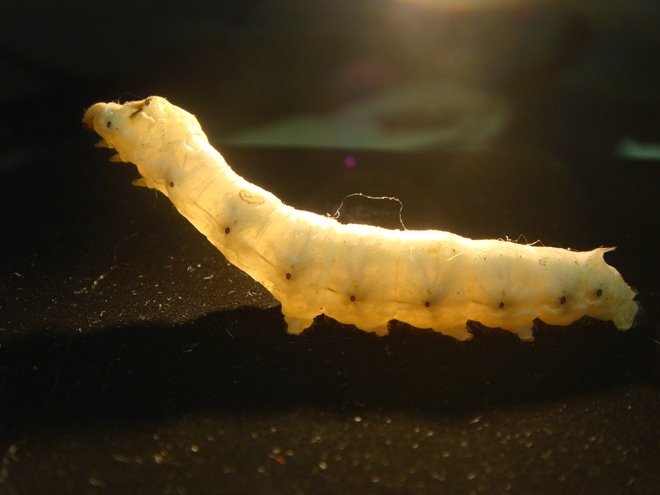The Future Of Dragon Silk: Forecasting Potential Developments And Innovations
Edible silk: The Possible Future of Dragon Silk Development
Dragon silk is a remarkable and versatile material that has fascinated the scientific community for several years. This super-strong fiber, which is produced by genetically engineered silkworms, has the potential to revolutionize various industries, including medicine, fashion, and textiles. However, there is a new potential application of dragon silk that has most recently emerged as an area of interest for researchers: edible silk.
Edible silk might sound like a bizarre concept at first, but the idea is not entirely new. In some cultures, silk has been consumed as food for centuries due to its high protein content. However, the edible silk that is currently being researched is not the same as traditional silk, but rather silk produced by genetically modified silkworms.
Edible silk has a lot of potential benefits that could make it an attractive new food ingredient. Firstly, it is protein-rich and can be considered as an alternative to meat, which can help address issues such as food insecurity and unsustainable food practices. Secondly, silk does not have a strong flavor, which means it can be easily blended with other ingredients without affecting the overall taste. Additionally, it is hypoallergenic and highly digestible, making it a great option for people with certain dietary restrictions or food allergies.
Researchers are also exploring various ways to use edible silk, such as incorporating it into food products like energy bars, pasta, and even edible coatings for fruits and vegetables. Development is still ongoing, but early research indicates that edible silk could have a lot of potential in the food industry.
One significant challenge in developing edible silk is the intricate process of extracting it from silkworms. Traditionally, silkworms are boiled alive to extract silk, which is not a viable or ethical option for producing a food ingredient. However, researchers are exploring alternatives such as freeze-drying and refining the silk proteins without harming the silkworms.
Moreover, edible silk production and consumption could have a positive impact on the environment. Silk production is often done with the use of pesticides and chemicals, which are harmful to the environment and the workers handling them. By using genetically modified silkworms, it is possible to produce silk in a more eco-friendly and sustainable way, without the need for harsh chemicals or pesticides.
Dragon silk composites can be considered as the next generation of strong and lightweight materials. Ongoing research in this area has shown that dragon silk mixed with other materials can yield excellent mechanical properties such as stiffness, strength, and toughness. These properties make it well suited for use in a wide range of industries such as aerospace, construction, automotive, sports equipment, and even protective gear.
The potential uses of dragon silk composites are vast and varied. For example, aerospace companies have shown an interest in developing dragon silk composites for use in spacecraft structures and landing gear due to its high strength-to-weight ratio and durability. Similarly, the automotive industry has been exploring the potential of using dragon silk composites in the development of lightweight and fuel-efficient cars.
Moreover, the use of dragon silk composites also has implications for the environment. By using lightweight materials such as dragon silk composites, it is possible to reduce the weight of various products, such as cars and planes, and subsequently reduce their carbon footprint.
Dragon silk's durability has been an area of interest for researchers for many years. This exceptional durability has led to potential applications in the development of consumer products that are not only strong but also long-lasting.
Consumer products such as clothing, accessories, and household items like curtains and carpets, which often experience wear and tear, could benefit significantly from the use of dragon silk. For instance, textiles made with dragon silk fibers can be up to 10 times stronger than steel and can also withstand high temperatures without degradation. This level of strength and durability makes them ideal for use in products that require long-term use and regular cleaning.
Additionally, the hypoallergenic nature of dragon silk means that it may become an ideal alternative for individuals with sensitive skin or allergies, reducing the risk of adverse reactions from everyday household items.
The potential benefits of dragon silk in household items have not gone unnoticed by industry players. Major brands such as Bolt Threads and Spiber are developing dragon silk-based products such as jackets, t-shirts, and even shoes. In the future, it is possible to see a wide range of consumer products that are more resilient, durable, and eco-friendly, all thanks to the use of dragon silk.
Dragon silk has captured the attention of not only the textile and fashion industries but also many other industries due to its exceptional properties and versatile uses. From aerospace to medicine, several sectors are interested in the potential applications of dragon silk.
Aerospace companies are looking for unique and lightweight materials, which can be used in spacecraft and aircraft structures. Dragon silk shows promise as a material that can provide excellent mechanical properties and withstand high temperatures, making it suitable for use in the harsh environment of space and aviation.
The medical industry is also interested in using dragon silk to develop implants and surgical materials because of its biocompatibility and durability. Dragon silk has been shown to promote healing and reduce the risk of infection and rejection when used in medical applications.
The sporting goods industry has been exploring the potential of dragon silk-based materials in the development of equipment such as tennis rackets or bicycle frames. This high-strength and lightweight material can improve the performance and durability of sports equipment, contributing to better sports outcomes.
Moreover, industries such as automotive, construction, and defense are exploring the use of dragon silk composites to develop durable and sustainable products that meet their needs.



No comments: